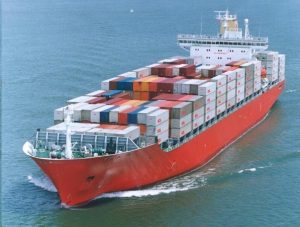
According to the World Shipping Council’s report, over $7 trillion worth of goods are transported annually via international liner ship operators, who offer more than 2,000 regularly scheduled services. The Washington DC-based organization highlighted these findings on its website.
The seas witness the transportation of 241 million containers annually, carrying goods valued at over $7 trillion. With intense competition in this market, more than 100 international liner ship operators offer over 2,000 regularly scheduled services, facilitating global trade between nations on a weekly basis.
The COVID-19 pandemic strained supply chains, causing unpredictable demand and resulting in increased shipping rates. However, as the world moves towards normalcy, the global supply network is stabilizing, and both rates and reliability are returning to pre-pandemic levels, as mentioned in the report.
The World Shipping Council (WSC) reported a significant drop in container losses at sea in 2022, with only 661 containers lost. This decline is primarily attributed to fewer substantial losses compared to previous years.
The council emphasized that the loss of 661 containers represents a mere 0.00026% of the total volume of cargoes shipped worldwide each year, indicating a significantly low loss rate.
Furthermore, the report highlighted an increase in the average number of containers lost annually between 2020 and 2022, with 2,301 containers lost on average during this period. This figure represents a substantial rise compared to the previous three years, which averaged 779 containers lost per year.The World Shipping Council acknowledged that the reported number of container losses reflects the industry’s efforts in enhancing container safety. However, it also emphasized that this figure serves as a reminder of the ongoing need for constant vigilance to protect the well-being of crews, safeguard valuable cargo, and preserve the environment.
“Over the 15-year period surveyed (2008–2022), an average of 1,566 containers were lost at sea each year.
“However, yearly losses can vary widely due to significant loss incidents, such as the MV Rena incident in 2011 where 900 containers were lost and the MOL Comfort incident in 2013, where a record 4,293 containers were lost when the ship sank in the Indian Ocean,” it stated.
According to the council, an unusually high number of weather-related incidents in 2020 and 2021 led to an average loss of 3,113 containers lost over the two years.
It added, “The spike can be attributed to significant container loss incidents in the Pacific Ocean, including the ONE Apus, which lost more than 1,800 containers in severe weather in November 2020, and the Maersk Essen, which also experienced severe weather in 2021 that resulted in the loss of some 750 containers overboard.”
The Chief Executive Officer of WSC, John Butler, said in the report, “The reduction in containers lost at sea in 2022 is positive news. However, we cannot afford complacency. We are committed to making the sea safer for work, protecting the environment and cargo by reducing the number of containers lost at sea.”
He explained that the safety of containers was a shared responsibility across the supply chain. “Key factors include proper packing, stowage, securing of containers, and accurate weight reporting. Daily, liner carriers collaborate with partners to prevent incidents and ensure safe container transport.
“Working with governments and stakeholders to minimise container losses at sea, the liner shipping industry continues to strive towards enhancing container safety. In 2021, WSC and several member lines, alongside maritime stakeholders, initiated the MARIN Top Tier project,” he explained.
According to him, the project’s research provides data on the causes of containers overboard and measures to prevent such incidents, adding that the research includes the production of training materials, videos, and calculators to help mitigate dangerous situations.
Leave a Reply